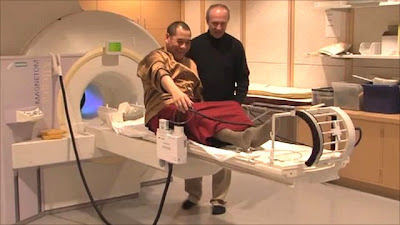In a laboratory tucked away off a noisy New York City street, a soft-spoken neuroscientist has been placing Tibetan monks into a car-sized brain scanner to better understand the ancient practice of Buddhist meditation.
But could this unusual research not only unravel the secrets of leading a harmonious life but also shed light on some of the world's more mysterious diseases?
Zoran Josipovic, a research scientist and adjunct professor at New York University, says he has been peering into the brains of monks while they meditate in an attempt to understand how their brains reorganize themselves during the exercise.
Since 2008, the researcher has been placing the minds and bodies of prominent Buddhist figures into a five-tonne (5,000 kg) functional magnetic resonance imaging (fMRI) machine.
The scanner tracks blood flow within the monks' heads as they meditate inside its clunky walls, which echoes a musical rhythm when the machine is operating.
Dr. Josipovic, who also moonlights as a Buddhist monk, says he is hoping to find how some meditators achieve a state of "nonduality" or "oneness" with the world, a unifying consciousness between a person and his/her environment.

Zoran Josipovic looking at brain scans on a computer. The study specifically looks at the default network in the brain, which controls self-reflective thoughts.
Dr. Josipovic's research is part of a larger effort better to understand what scientists have dubbed the default network in the brain. More




















































































































































































































































No comments:
Post a Comment